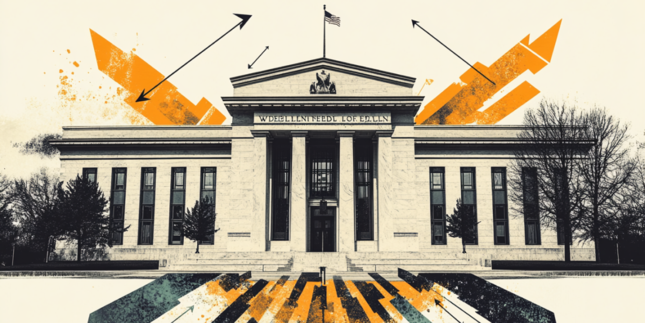For retail traders, finding an edge can be challenging. The pace is fast, the data is vast, and decisions must be precise. This is where machine learning (ML)—a subset of artificial intelligence (AI)—is making a significant impact. Through powerful data-driven insights, ML helps traders identify patterns, manage risks, and adapt strategies in real-time.
Machine learning works by analyzing large sets of data, learning from it, and identifying trends that can guide trading decisions. By recognizing patterns that aren’t always visible through traditional analysis, ML enables traders to spot opportunities and stay agile in volatile markets.
Predictive insights and pattern recognition
In CFD trading, historical data can often reveal patterns that might help predict future price movements. Machine learning models can analyze past price movements, processing years of data in minutes.
For example, an ML algorithm trained on years of forex price data might identify conditions under which certain currency pairs typically rise or fall. By providing these insights, ML gives traders a data-backed basis for their trading decisions, helping them act on emerging opportunities sooner.
Algorithmic and quantitative trading
Machine learning enables algorithmic trading, which automates trades based on predefined criteria. These algorithms are often powered by ML models that have been trained to recognize profitable trading patterns.
For retail CFD traders, this means setting up strategies that execute automatically when specific conditions are met, such as breakouts in commodity prices. Machine learning-based algorithms don’t just execute; they can also adapt over time, refining strategies to respond to changing market conditions.
Understanding market sentiment
Sentiment analysis—powered by machine learning—can be a powerful tool for CFD traders. By analyzing news, social media, and financial reports, ML models gauge market sentiment, giving traders a sense of the overall mood in the market.
For instance, if negative sentiment is building around a commodity or a currency pair, ML algorithms can flag this, providing traders with early signals about potential market moves. This insight helps traders to adapt strategies based on the current mood or trend, aligning trades with broader market sentiment.
Enhanced risk management
Risk management is essential in leveraged trading, and ML can help retail traders monitor and manage exposure more effectively. Machine learning algorithms analyze multiple factors that affect prices—such as macroeconomic indicators, credit spreads, and interest rates—to assess risk levels.
By detecting heightened volatility or identifying market conditions that signal increased risk, ML-powered tools allow traders to adjust their strategies, reducing position sizes or tightening stop-loss orders as needed.
Real-time adaptation and anomaly detection
CFD markets are known for their rapid changes, and machine learning models can adapt quickly to these shifts. Unlike static trading systems, ML models are continuously updated with new data, learning and adapting as markets evolve.
For example, if a geopolitical event causes sudden price swings in oil, ML algorithms can adjust accordingly, updating predictions and strategies in real-time. This adaptability is key for retail traders who need to stay responsive to shifting conditions.
Additionally, machine learning excels at anomaly detection, which is critical in CFD trading. Anomalies—unexpected patterns in the data—could indicate unusual market activity, like sudden spikes in forex pairs or unexpected drops in a commodity index. ML algorithms can identify these patterns and flag them for traders, helping them avoid unexpected losses or capitalize on short-term opportunities.
Machine learning techniques in CFD trading
Machine learning offers several techniques that can benefit retail CFD traders:
-
Supervised Learning: Trained on historical data, supervised learning models predict future price movements. For example, they may forecast when a forex pair is likely to enter a bullish phase based on past conditions.
-
Unsupervised Learning: This approach finds hidden patterns in data, uncovering new trading opportunities.
-
Reinforcement Learning: Through trial and error, the model learns from its past trades, adapting strategies to improve over time—a useful approach for creating adaptive trading models.
Levelling the playing field for retail traders
Machine learning offers retail CFD traders the ability to use insights and tools previously available only to institutional investors. By integrating ML into their trading processes, traders can make faster, data-informed decisions and execute strategies with greater precision. With applications ranging from predictive analysis and sentiment tracking to risk management and adaptive strategies, ML gives retail traders a sharper competitive edge.
In a field as dynamic as CFD trading, machine learning is transforming how traders approach the markets. It provides a depth of analysis and speed of execution that enhances traditional strategies, making it easier for traders to identify opportunities, manage risks, and respond to market changes effectively. As machine learning continues to evolve, its role in CFD trading will only become more integral—offering retail traders the insights they need to navigate complex markets with confidence.
CFDs are complex instruments and come with a high risk of losing money rapidly due to leverage. You should consider whether you understand how CFDs work and whether you can afford to take the high risk of losing your money. The Article/Information available on this website is for informational purposes only, you should not construe any such information or other material as investment advice or any other research recommendation. Nothing contained on this Article/ Information in this website constitutes a solicitation, recommendation, endorsement, or offer by LegacyFX and A.N. ALLNEW INVESTMENTS LIMITED in Cyprus or any affiliate Company, XE PRIME VENTURES LTD in Cayman Islands, AN All New Investments BY LLC in Belarus and AN All New Investments (VA) Ltd in Vanuatu to buy or sell any securities or other financial instruments in this or in in any other jurisdiction in which such solicitation or offer would be unlawful under the securities laws of such jurisdiction. LegacyFX and A.N. ALLNEW INVESTMENTS LIMITED in Cyprus or any affiliate Company, XE PRIME VENTURES LTD in Cayman Islands, AN All New Investments BY LLC in Belarus and AN All New Investments (VA) Ltd in Vanuatu are not liable for any possible claim for damages arising from any decision you make based on information or other Content made available to you through the website, but investors themselves assume the sole responsibility of evaluating the merits and risks associated with the use of any information or other Article/ Information on the website before making any decisions based on such information or other Article.
Editors’ Picks

AUD/USD hovers around 0.6650, unfazed by poor China's activity data
AUD/USD is keeping its range around 0.6650 in Monday's Asian trading. little affected by downbeat China's activity data for November. The country's Retail Sales, Fixed Asset Investment and Industrial Production data came in below forecasts and refuelled economic growth concerns.

USD/JPY drops toward 155.50 amid Fed-BoJ monetary policy divergence
USD/JPY stays under pressure toward 155.50 in the Asian session on Monday. The pair remains on the back foot as the Japanese Yen continues to draw support from the expectations of Fed-BoJ monetary policy divergence and a risk-off market profile. Fedspeak is next in focus.

Gold regains traction toward $4,350 in the final full week of 2025
Gold price picks up bids once again toward $4,350 in Asian trading on Monday. The precious metal extends its upside to the highest since October 21 amid the prospect of interest rate cuts by the US Federal Reserve next year. The delayed US Nonfarm Payrolls report for October will be in the spotlight later on Tuesday.

Week ahead: US NFP and CPI, BoE, ECB and BoJ mark a busy week
After Fed decision, dollar traders lock gaze on NFP and CPI data. Will the BoE deliver a dovish interest rate cut? ECB expected to reiterate “good place” mantra. Will a BoJ rate hike help the yen recover some of its massive losses?

Big week ends with big doubts
The S&P 500 continued to push higher yesterday as the US 2-year yield wavered around the 3.50% mark following a Federal Reserve (Fed) rate cut earlier this week that was ultimately perceived as not that hawkish after all. The cut is especially boosting the non-tech pockets of the market.
RECOMMENDED LESSONS
Making money in forex is easy if you know how the bankers trade!
I’m often mystified in my educational forex articles why so many traders struggle to make consistent money out of forex trading. The answer has more to do with what they don’t know than what they do know. After working in investment banks for 20 years many of which were as a Chief trader its second knowledge how to extract cash out of the market.
5 Forex News Events You Need To Know
In the fast moving world of currency markets where huge moves can seemingly come from nowhere, it is extremely important for new traders to learn about the various economic indicators and forex news events and releases that shape the markets. Indeed, quickly getting a handle on which data to look out for, what it means, and how to trade it can see new traders quickly become far more profitable and sets up the road to long term success.
Top 10 Chart Patterns Every Trader Should Know
Chart patterns are one of the most effective trading tools for a trader. They are pure price-action, and form on the basis of underlying buying and selling pressure. Chart patterns have a proven track-record, and traders use them to identify continuation or reversal signals, to open positions and identify price targets.
7 Ways to Avoid Forex Scams
The forex industry is recently seeing more and more scams. Here are 7 ways to avoid losing your money in such scams: Forex scams are becoming frequent. Michael Greenberg reports on luxurious expenses, including a submarine bought from the money taken from forex traders. Here’s another report of a forex fraud. So, how can we avoid falling in such forex scams?
What Are the 10 Fatal Mistakes Traders Make
Trading is exciting. Trading is hard. Trading is extremely hard. Some say that it takes more than 10,000 hours to master. Others believe that trading is the way to quick riches. They might be both wrong. What is important to know that no matter how experienced you are, mistakes will be part of the trading process.
The challenge: Timing the market and trader psychology
Successful trading often comes down to timing – entering and exiting trades at the right moments. Yet timing the market is notoriously difficult, largely because human psychology can derail even the best plans. Two powerful emotions in particular – fear and greed – tend to drive trading decisions off course.

